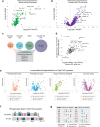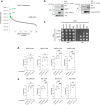PPTC7 maintains mitochondrial protein content by suppressing receptor-mediated mitophagy
- PMID: 37833277
- PMCID: PMC10575892
- DOI: 10.1038/s41467-023-42069-w
PPTC7 maintains mitochondrial protein content by suppressing receptor-mediated mitophagy
Abstract
PPTC7 is a resident mitochondrial phosphatase essential for maintaining proper mitochondrial content and function. Newborn mice lacking Pptc7 exhibit aberrant mitochondrial protein phosphorylation, suffer from a range of metabolic defects, and fail to survive beyond one day after birth. Using an inducible knockout model, we reveal that loss of Pptc7 in adult mice causes marked reduction in mitochondrial mass and metabolic capacity with elevated hepatic triglyceride accumulation. Pptc7 knockout animals exhibit increased expression of the mitophagy receptors BNIP3 and NIX, and Pptc7-/- mouse embryonic fibroblasts (MEFs) display a major increase in mitophagy that is reversed upon deletion of these receptors. Our phosphoproteomics analyses reveal a common set of elevated phosphosites between perinatal tissues, adult liver, and MEFs, including multiple sites on BNIP3 and NIX, and our molecular studies demonstrate that PPTC7 can directly interact with and dephosphorylate these proteins. These data suggest that Pptc7 deletion causes mitochondrial dysfunction via dysregulation of several metabolic pathways and that PPTC7 may directly regulate mitophagy receptor function or stability. Overall, our work reveals a significant role for PPTC7 in the mitophagic response and furthers the growing notion that management of mitochondrial protein phosphorylation is essential for ensuring proper organelle content and function.
© 2023. Springer Nature Limited.
Conflict of interest statement
The authors declare the following competing interests: J.J.C. is a consultant for Thermo Fisher Scientific, 908 Devices, and Seer. The remaining authors declare no competing interests.
Figures





Update of
-
Pptc7 maintains mitochondrial protein content by suppressing receptor-mediated mitophagy.bioRxiv [Preprint]. 2023 Mar 1:2023.02.28.530351. doi: 10.1101/2023.02.28.530351. bioRxiv. 2023. Update in: Nat Commun. 2023 Oct 13;14(1):6431. doi: 10.1038/s41467-023-42069-w. PMID: 36909604 Free PMC article. Updated. Preprint.
References
Publication types
MeSH terms
Substances
Grants and funding
LinkOut - more resources
Full Text Sources
Molecular Biology Databases
Research Materials

